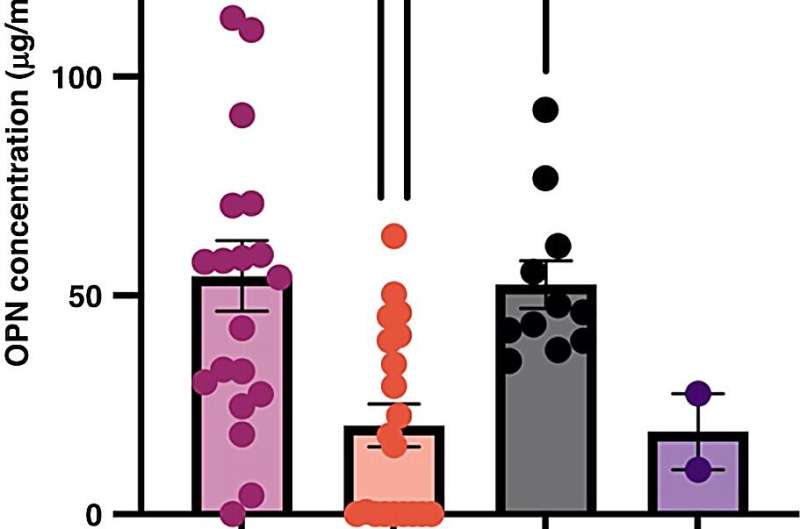This article has been reviewed according to Science X's editorial process and policies. Editors have highlighted the following attributes while ensuring the content's credibility:
fact-checked
peer-reviewed publication
trusted source
proofread
Pasteurization reduces bioactive component of breast milk, finds study

Providing human breast milk to preterm infants is a strategy for preventing complications including necrotizing enterocolitis. Because a mother's own milk (considered the gold standard) is not always available, it is important to determine whether alternate breast milk products confer equal nutritional and bioactive value.
Danyvid Olivares-Villagómez, Ph.D., graduate student Kathleen McClanahan and colleagues determined how common milk pasteurization and storage techniques affect the concentration of osteopontin, a bioactive protein in breast milk that plays roles in intestinal, immunological and brain development. They measured osteopontin concentrations in human breast milk from multiple sources, including fresh and frozen single-donor samples, pooled donor breast milk (Holder-pasteurized), and a shelf-stable breast milk product (retort-pasteurized).
They found that Holder pasteurization reduced osteopontin concentration by about 50%, and that the shelf-stable product, which had a harsher (retort) pasteurization, had lower levels of osteopontin than the Holder-pasteurized pooled donor breast milk. Interestingly, freezing breast milk prior to Holder pasteurization resulted in less osteopontin degradation than Holder pasteurization prior to freezing.
Breast milk from mothers of preterm infants trended toward higher osteopontin concentration compared to breast milk from mothers of term infants, but the samples from preterm mothers had greater osteopontin degradation with pasteurization.
The findings, reported in the journal Pediatric Research, show that pasteurization significantly affects osteopontin concentration, which may hinder the activity of this bioactive protein. Osteopontin supplementation could be considered, the authors note; bovine osteopontin has been approved for formula supplementation in Europe and is well tolerated by infants.
More information: Kathleen G. McClanahan et al, Effects of pasteurization on osteopontin concentrations in human breastmilk, Pediatric Research (2023). DOI: 10.1038/s41390-023-02838-1


















